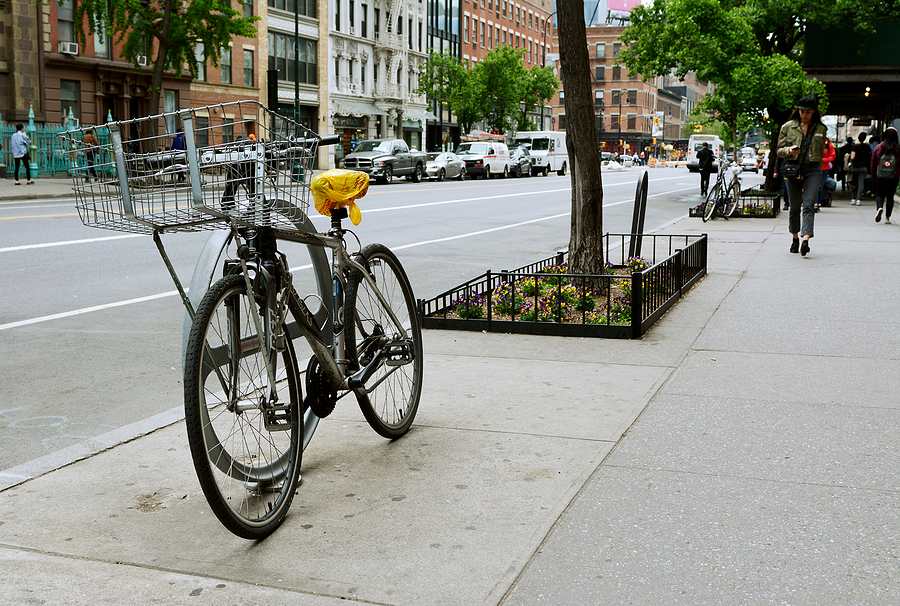Why Sidewalk Conditions Can Put Your NYC Building Insurance at Risk

The sidewalks around your building may belong to New York City. But the responsibility for maintenance and sidewalk liability lies with you. In fact, underwriters report that sidewalk-related injuries are the leading liability claim against New York City landlords.
Why Sidewalk Conditions Have Created an Insurance Crisis in NYC
Insurance premiums have steadily increased in recent years for several reasons, many of which lie beyond the control of property owners. These factors include weather-related disasters from global warming and rising reconstruction costs, due to the higher costs of labor and materials. Claims arising from maintenance-related issues, however, can be controlled. Sidewalk conditions fall squarely in this category.
According to the New York Administrative Code, property owners are generally responsible for maintaining the sidewalks outside or adjacent to their buildings. The law does not apply to one-, two- or three-bedroom residential properties that are owner-occupied and used only for residential purposes. Except in these circumstances, property owners are responsible for both property damage and personal injury.
Insurance underwriters report that sidewalk liability claims in New York City have surpassed fire and water loss totals—typically, the two primary sources of insurance claims. As a result, this negative trend is reshaping underwriting standards in the Greater New York City area.
The New Zero Tolerance Standard for Sidewalk Defects
Damaged and uneven sidewalk surfaces are leading causes of sidewalk-related injury. Below are some examples of unsafe sidewalk conditions:
- Vertical or horizontal separation of ½-inch or more between sidewalk flags
- Settlement in the sidewalk that causes water retention and slippery conditions
- Excessive cross-slopes due to tree roots
- Chipped or cracked sidewalk flags with loose or movable pieces
- Sidewalk flags with visible voids or movement
- Off-grade surfaces, such as different heights between the sidewalk and curb and gutter
- Partial or surface-level patchwork, including the use of unapproved materials (e.g., asphalt)
- Non-compliance with DOT specifications or failure to maintain structural integrity
Insurance underwriters have adopted a zero-tolerance policy for unsafe sidewalk conditions.
How Stricter Sidewalk Standards Affect NYC Property Owners
This zero-tolerance stance means that property owners in the five boroughs can expect to have their insurance policies canceled if any adjacent sidewalk sections have uneven areas, a lift of ¼ inch or more, or cracks that measure at least ½ inch in width or depth. Depending on when unsafe conditions are identified, property owners can expect the following consequences.
- Within 60 days of policy’s effective date. If the underwriter receives a loss control survey identifying such conditions within 60 days of the policy’s effective date, the owner will receive a cancellation notice.
- More than 60 days of policy’s effective date. If these unsafe conditions are identified more than 60 days after the policy’s effective date, the insurance company will issue a notice of non-renewal. Owners will have the opportunity to replace defective slabs or sidewalk sections before the policy’s expiration date. To renew coverage, property owners need to submit invoices for the sidewalk repairs and photos of the finished work.
Curbs and Tree Wells: City Responsibility, Property Owner Liability
Certain sections of the sidewalk, including curbs and tree wells, fall under DOT authority. While New York City is responsible for repairing these areas, the liability for unsafe conditions falls on the abutting property owner. Consequently, ignoring these areas jeopardizes a property owner’s building insurance policy, exposing the owner to even more risk.
Proactive Steps to Protect Your Building and Coverage
For owners of urban properties, sidewalk maintenance literally comes with the territory. The following best practices will help keep sidewalks safe—and insurance coverage in place.
- Conduct sidewalk inspections—including curbs and tree wells—at least twice per year and document all findings.
- Repair minor cracks immediately and retain invoices.
- Document sidewalk conditions with photography or video.
- Contact your insurance broker early if repairs are pending at renewal time.
- Review policy exclusions and verify liability insurance coverage levels.
If inspections reveal problems with sidewalk sections that fall under city responsibility, property owners should report these issues to the city immediately by calling 311 or visiting NYC 311 online. The city may repair or replace the damaged section at no cost to the property owner, but the repairs may not happen fast enough to prevent policy cancellation. While New York City is responsible for curb maintenance, property owners are encouraged to repair or replace missing or damaged curbs as part of their ongoing sidewalk maintenance.
How City Building Owners Insurance Helps Owners in Challenging Markets
Since 1976, City Building Owners Insurance has helped building owners navigate the unique risk landscape of New York City. Stu Cohen and his team start by getting to know owners and their properties. This in-depth understanding, coupled with nearly five decades of experience, allows them to recommend ways for owners to lower their risk profile and qualify for more attractive premiums. Through ongoing communication, the professionals at the City Building Owners Insurance program help clients mitigate risk, maintain compliance and customize coverage to meet their specific needs.
If you have any questions about liability coverage or would like a free insurance review, please call us at 877-576-5200.

